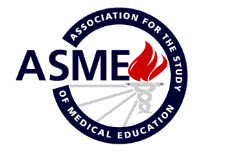LIVE Session – Getting Realist with New Medical Schools—8C’s for Success
Episode host: Jason R. Frank

If you are looking for something to do this week, you could always set up a new medical school. This paper makes you smarter by introducing the new 8Cs Framework for success in making new medical schools and reviewing Critical Realist methodology.
Episode article
Kirubakaran, S., Kumar, K., Worley, P., Pimlott, J., & Greenhill, J. (2024). Establishing new medical schools in diverse contexts: A novel conceptual framework for success. Medical Education, n/a(n/a).
Episode notes
Background
Starting a new medical school is not for the faint of heart. In fact, longevity researchers have identified “involved in starting a new medical school” as a factor in cellular ageing. Nevertheless, as the global population grows and demand for health professionals far exceeds demands, ~100 new medical schools are established each year.
It takes more than a village to build a med school. In fact, it takes politicians, big money, community engagement, eager students, educational design, facilities, patients, accreditation, and dedicated (usually underappreciated) founding faculty. Truly Herculean. You would think all this resource-intensive institution-building would induce a large body of literature about med-school-making. Actually no, there is a gap in the literature. In fact, the authors of today’s paper assert that there is little published empirical evidence, nor any theory brought to bear on this phenomenon.
Purpose
Enter Kirubakaran et al, from 5 institutions in Australia. This team set out to examine the establishment of new medical schools in three distinct regions of the world using the distinct lens of Critical Realist Multiple Case Study (CRMCS). They operationalized this into the research question “How are new medical schools successfully established in medically underserved areas?”
Methods
These authors chose a Critical Realist lens and Institutional Entrepreneurship theory to design this study.
Now a moment from our sponsor about Critical Realism (Lara will have more to say in this episode, along with big words like “epistemology” and “ontology”)…CR is a philosophy of science championed by Bhaskar (1975, 1998) as an alternative to positivism and interpretivist paradigms. CR that holds that there is an independent reality, but that human knowledge of this reality is fallible. CR research aims to provide empirically supported statements about how and why a phenomenon occurred in a given instance. CR research can describe processes by which structures, actions, and contextual conditions lead to an outcome. CR is focused on explanation over prediction.
Institutional Entrepreneurship theory looks at the activities of those who leverage resources to create new or transformed institutions. It deals with “field conditions”, “institutional entrepreneurs”, “resources”, “rationales”, and “relationships”.
These two ingredients informed the methodology of this study.
The CRMCS approach was applied to 3 new medical schools in underserviced areas: the Northern Territory Medical Program (NTMP) in Australia, the Northern Ontario School of Medicine (NOSM) in Canada, and the University of Botswana Faculty of Medicine (UBFoM).
This study had Institutional Review Board ethics approval.
Data were collected between 2016 and 2018, 5-11 years after the schools launched. Methods included site visits, document review, AV review, and interviews of key stakeholders.
Iterative analysis employed a variety of approaches (inductive, deductive, abductive, retroductive, and retrodictive–in keeping with CR) to infer the underlying causal mechanisms that impacted the observed findings.
Results/Findings
Using the theoretical framework, the authors developed the Eight C’s Framework (8CF) to describe the interconnected ingredients for the successful implementation of a new medical school. These include:
- Context – local conditions
- Catalysts – visionary leaders/sponsors
- Conducing – facilitation efforts
- Collecting – resources brought to bear
- Connecting – building relationships needed
- Convincing – compelling rationales
- Challenges – obstacles to achieving the vision
- Consequences – intended or unintended outcomes.
Conclusions
The authors propose that their new 8CF will be a useful guide to any who are considering creating a new medical school or transforming one. The 8 elements could inform decisions in implementation. Further, the authors assert that the model is widely applicable, given the similarity of the ingredients that would be found in a variety of contexts.
Paper Clips
Cool reminder of Critical Realist approaches and an example of CRMCS.
Much of the HPE literature derives its epistemological stance from positivist and interpretivist approaches, but others are out there.
This paper is an example of addressing an identified gap in the HPE evidence base by pulling theories from other fields.



0 comments